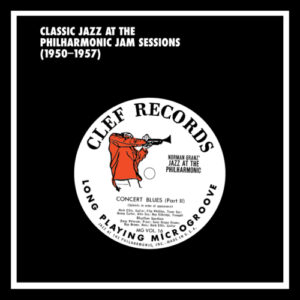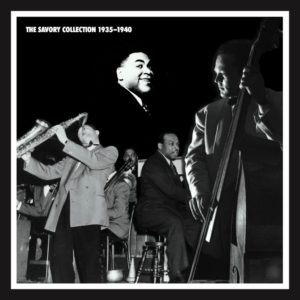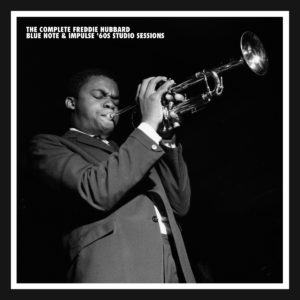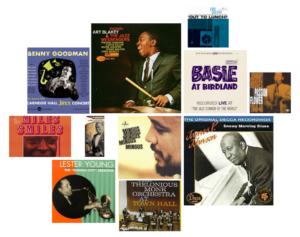
One Of The Most Original Jazz Trumpeters
Of The Last 40 Years
Stunning Audio Quality
Mastered from hi-res files of the original analog masters by Malcolm Addey. Thanks to current 24 bit/192 hKz technology and dramatic improvement in analog to digital converters, the sound on this set is far superior to any previous CD issues and is astonishingly close to that of audiophile vinyl.
Ten Classic Studio Albums on Seven CDs
This limited edition collection traces Hubbard’s rise to prominence by collecting the entire ten studio albums recorded during his first six years as a leader. All of the music gives evidence of a brilliant player with an ever-more-personal voice, a budding composer who would go on to pen several jazz classics.
“From the moment he played one note you knew that was Freddie Hubbard. He had a sound that was as distinctive as Miles Davis, as Louis Armstrong, as Clifford Brown. I mean, he’s one of those trumpet players.” – Stanley Crouch

Freddie Hubbard
Rarely Was A Trumpeter As Accomplished
Freddie Hubbard didn’t just play trumpet, he played THE trumpet – he played with commanding strength and a rich, broad tone, he played with warmth and seduction, he played its entire spectrum from low register to high. Knowing it to be an instrument designed to respond well to dexterity, he became a virtuoso capable of dizzying 16th-note runs through surprising chord inversions, each the exact right note in the moment.
He used his embouchure in new ways to bend and caress the sound, something more associated with saxophone players than brass. There wasn’t one aspect of trumpet playing that Freddie Hubbard didn’t master on the road to becoming one of the most consummate jazz soloists in the music’s history.
Even at the start of his career, Hubbard’s command over his tone was exceptional. He could achieve deep and moving warmth, yet also unleash a ringing, brilliant call-to-attention when the composition demanded. As for his soloing, it’s possible that his experience with the Jazz Messengers – which featured an expanded front line leading to shorter solos – taught him the value of what one writer called his “narrative clarity.” Hubbard seemed to say more, and more coherently, without losing the thread in his solo statements.
A broad spectrum of leaders wanted his power, his weight, his taste, and his inventiveness.
No wonder he was busy almost continuously from the moment he hit New York at the age of 20, already a working musician and immediately in demand. He became known mostly for a sound associated with Blue Note Records and hard bop, but quickly he was everywhere doing everything — with Eric Dolphy (his roommate) on “Outward Bound,” Ornette Coleman on “Free Jazz,” Herbie Hancock on “Maiden Voyage,” John Coltrane on “Ascension,” Wayne Shorter on “Speak No Evil,” and Oliver Nelson on “The Blues and the Abstract Truth.”
His work with Art Blakey’s sextet from 1961 to ‘64 catapulted his compositional and improvisational talents to the world stage. That relationship yielded ten albums and introduced such Hubbard classics as “Down Under,” “Crisis,” “Up Jumped Spring” and “Thermo.”
Hubbard’s collaborators on these Blue Note and Impulse! dates run the gamut from newcomers (in 1960) like Clifford Jarvis and McCoy Tyner, with the always-underrated Tina Brooks, to established royalty like Paul Chambers, Philly Jo Jones, and Hank Mobley just a year later. Other groupings through the years include Sam Jones, Cedar Walton, Larry Ridley, Jimmy Heath, Julian Priester, Elvin Jones, Art Davis, Wayne Shorter, Bernard McKinney, John Gilmore, Tommy Flanagan, Louis Hayes, Curtis Fuller, Art Davis, Reggie Workman, James Spaulding, Herbie Hancock, Eric Dolphy, Ronnie Mathews, Eddie Khan, Joe Chambers, Joe Henderson, Harold Mabern, Big Black, and Kiane Zawadi.
Each album has treats for the listener
Now at last Freddie gets his own seven-CD box set, with a special twist. Thanks to a special arrangement with the labels, we were able to package “The Complete Freddie Hubbard Blue Note & Impulse ‘60s Studio Sessions” in one box, representing every studio date he led from 1960 to 1966.
There’s never been a better way to trace his development as an artist or own some of the most significant music of his long career. It was an era when musicians like Hubbard weren’t only making great music. They were making music history.
With exceptional arrangements by Wayne Shorter in three distinctive settings (big band, strings and small group), the album “The Body & The Soul” is a window into the work of a musician in complete control. From the flawless rendition of “Body And Soul” which he embraces, completely subduing the instrument’s brassiness, to the sharper and more piercing approach to Ellington’s “Chocolate Shake” and the experimental vibe of “Clarence’s Place” featuring Eric Dolphy’s jabs and jolts.
His ballad mastery on “But Beautiful,” his sensitivity on “Cry Me Not,” the simmering intensity of “Luana,” and taut blowing on “Earmon Jr.” stand out, as does his cheerful, bright approach to “Happy Times” and his fleet, sure-footed flurry on “Philly Mignon.” It’s hard to imagine one musician leading four dates in the span of 16 months, while simultaneously participating on “Doin’ Alright” with Dexter Gordon, “Africa/Brass” and “Ole Coltrane” with John Coltrane, and holding down the trumpet chair with Art Blakey, but that was Hubbard at his finest.
The Mosaic Treatment
Our box includes our exclusive Mosaic booklet featuring a complete discography and an essay and track-by-track analysis from our Blue Note chronicler Bob Blumenthal.
The 12 x 12 booklet is rich with beautifully reproduced images from master photographer Francis Wolff. With over 30 photographs, many from the actual sessions, Wolff’s images capture great musicians making history.
All sessions are sourced from the original analog masters. Thanks to current 24 bit/192 hKz technology and dramatic improvement in analog to digital converters, the sound on this set is far superior to any previous CD issues and is astonishingly close to that of audiophile vinyl.
“Freddie Hubbard was, I believe, the greatest jazz trumpet stylists of my generation. His influence is still being felt in the sound of many young trumpeters today. His warm tone and formidable technique will be considered marvels well into the future.” – Herbie Hancock
Selected Audio Clips
Bob Blumenthal, liner note excerpts

Album: Open Sesame
Audio Clip: Open Sesame
Freddie Hubbard began his career on Blue Note leading a quintet that included two emerging players also making their first appearance on the label, pianist McCoy Tyner and drummer Clifford Jarvis. The veterans completing the group were bassist Sam Jones and tenor saxophonist Tina Brooks. Brooks is another of the many jazz musicians only fully appreciated posthumously. This is one of his most essential dates, highlighting his strengths as both composer and soloist.
Brooks authored the title track, a minor key opus in extended (64 bar) AABA form that has a Horace Silverish main strain and a more relaxed bridge. Hubbard immediately establishes a strong, centered sound, great harmonic assurance, flawless execution when he enters the upper register and great rhythmic agility. Brooks is an ideal contrast with his light-heavyweight sound and ability to break the flow, then seamlessly recover. Tyner’s chorus is single line, without the weight and pentatonic proclivities that would come to define his style.

Album: Hub-tones
Audio Clip: Hub-tones
Freddie Hubbard had served as a Jazz Messenger for more than a year at this point, but his notions of what a working Freddie Hubbard band would sound like were quite clear to judge from this greatly undervalued album. It features a one-time ensemble of independently established associates.
Herbie Hancock and Hubbard blend as effectively as they did on the pianist’s Takin’ Off, Reggie Workman had recently replaced Jymie Merritt with Blakey, and Clifford Jarvis returns from Hubbard’s Open Sesame debut. James Spaulding, a constant companion for the remainder of the decade, is another Indianapolis native who worked alongside Hubbard in the Jazz Contemporaries band.
After an introduction, “Hub-Tones” employs a hectoring line to disguise its blues structure. This is our first chance to hear the distinctive trumpet/alto blend that Hubbard and Spaulding were able to create, a sound that set them apart from other similarly constructed front lines.

Album: Breaking Point
Audio Clip: Mirrors
The 1964 “Breaking Point” introduced Freddie Hubbard’s first working band with James Spaulding, Ronnie Mathews, Eddie Khan and Joe Chambers. The music played came from Hubbard and his drummer Joe Chambers.
Joe Chambers’ “Mirrors” gave the record-buying public an introduction to a composer whose work would soon be extensively featured on Bobby Hutcherson’s albums. Hutcherson had actually recorded the piece five months earlier, but the resulting album (The Kicker) was not released until 1999. The touching melody is presented in overlapping trumpet and flute lines and inspires Hubbard’s warmest playing in the entire collection.

Album: Blue Spirits
Audio Clip: Outer Forces
Only Kiane Zawadi and James Spaulding returned for the second session of “Blue Spirits”. Conga drums were omitted, Hank Mobley and McCoy Tyner replaced Joe Henderson and Harold Mabern, and Pete LaRoca (also a member of Hubbard’s working band) and Bob Cranshaw complete the rhythm section. The originals here are more complex and the voicings richer, yet they remain constructed around the affinity of Hubbard and Spaulding that made the pair’s previous quintet albums so memorable.
“Outer Forces” got its name, according to the composer, “because the first chord is really out.” Once the melody arrives, we have “Love for Sale” changes disguised by a funhouse-mirror foreshortening of the bridge. Hubbard, shifting and jabbing, never loses the rhythm section, and Spaulding’s alto lands at some explosive midpoint between Lou Donaldson fatback and Eric Dolphy fringe. Mobley’s solo reveals that the transition to his final, more declarative phase was not quite complete, though he’s on the path.

Album: The Body And The Soul
Audio Clip: Dedicated to You
The album’s third session is in a septet setting comprising all current Messengers save Blakey, Louis Hayes back on drums from the previous Impulse! album, and Dolphy on flute and alto sax. Shorter again provides arrangements, with the focus remaining on ballads.
Flute is once again prominent at the opening of “Dedicated to You,” a single-chorus performance that brings the ensemble back to launch the final eight bars. Hubbard is at his most direct here, with spare but effective Walton’s support.
Additional Albums Included




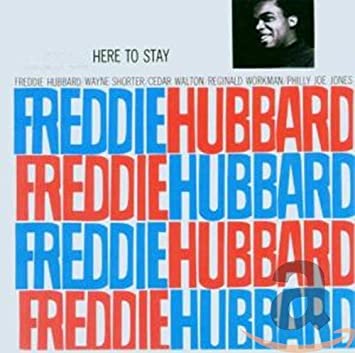
Limited Edition: 5000
(#274- 7 CDs)
Freddie Hubbard made a lasting impression with these recordings alongside recognized leaders and future superstars. It’s a collection that has never before been possible and will never be available again in this form when it sells out. We urge you to order yours today.
THE COMPLETE FREDDIE HUBBARD BLUE NOTE & IMPULSE ‘60s STUDIO SESSIONS
Mosaic MD7-274 (7 CDs)
Disc One:
1. Open Sesame (A) 7:08
(Tina Brooks)
2. But Beautiful (A) 6:24
(J. Burke-J. Van Heusen)
3. Gypsy Blue (A) 6:22
(Tina Brooks)
4. All Or Nothing At All (A) 5:33
(J. Lawrence-A. Altman)
5. One Mint Julep (A) 6:00
(Rudolph Toombs)
6. Hub’s Nub (A) 6:52
(Freddie Hubbard)
7. Open Sesame (alt tk) (A) 7:14
(Tina Brooks)
8. Gypsy Blue (alt tk) (A) 7:32
(Tina Brooks)
9. Asiatic Raes (B) 6:43
(Kenny Dorham)
10. The Changing Scene (B) 5:46
(Hank Mobley)
11. Karioka (B) 6:12
(Kenny Dorham)
Disc Two:
1. A Peck A Sec (B) 5:46
(Hank Mobley)
2. I Wished I Knew (B) 7:44
(Billy Smith)
3. Blues For Brenda (B) 6:59
(Freddie Hubbard)
4. Hub Cap (C) 5:14
(Freddie Hubbard)
5. Cry Me Not (C) 4:46
(Randy Weston)
6. Luana (C) 10:03
(Freddie Hubbard)
7. Osie Mae (C) 6:49
(Freddie Hubbard)
8. Plexus (C) 8:59
(Cedar Walton)
9. Earmon Jr. (C) 6:15
(Freddie Hubbard)
10. Plexus (alt tk) (C) 9:06
(Cedar Walton)
Disc Three:
1. Arietis (D) 6:39
(Freddie Hubbard)
2. Weaver Of Dreams (D) 6:34
(V. Young-J. Elliott)
3. Marie Antoinette (D) 6:38
(Wayne Shorter)
4. Birdlike (D) 10:15
(Freddie Hubbard)
5. Crisis (D) 11:40
(Freddie Hubbard)
6. Arietis (alt tk) (D) 5:49
(Freddie Hubbard
7. Marie Anoinette (alt tk) (D) 6:13
(Wayne Shorter)
8. Caravan (E) 7:25
(Tizol-Ellington-Mills)
9. Bob’s Place (E) 10:01
(Freddie Hubbard)
10. Happy Times (E) 4:26
(Freddie Hubbard)
Disc Four:
1. Summertime (E) 10:03
(Gershwin-Gershwin-Heywood)
2. The 7th Day (E) 10:29
(Freddie Hubbard)
3. Philly Mignon (G) 5:27
(Freddie Hubbard)
4. Father And Son (G) 6:34
(Cal Massey)
5. Body And Soul (G) 6:26
(Green-Sour-Heyman-Eyton)
6. Nostrand And Fulton (G) 7:07
(Freddie Hubbard)
7. Full Moon And Empty Arms (G) 5:25
(B. Kaye-T. Mossman)
8. Assunta (G) 7:04
(Cal Massey)
Disc Five:
1. You’re My Everything (F) 6:33
(Dixon-Warren-Young)
2. Prophet Jennings (F) 5:27
(Freddie Hubbard)
3. Hub-tones (F) 8:20
(Freddie Hubbard)
4. Lament For Booker (F) 9:38
(Freddie Hubbard)
5. For Spee’s Sake (F) 8:34
(Freddie Hubbard)
6. You’re My Everything (alt tk) (F) 6:26
(Dixon-Warren-Young)
7. Hub-tones (alt tk) (F) 7:57
(Freddie Hubbard)
8. For Spee’s Sake (alt tk) (F) 7:49
(Freddie Hubbard)
9. Body And Soul (J) 4:36
(Green-Sour-Heyman-Eyton)
10. Dedicated To You (J) 3:21
(Cahn-Chaplin-Zaret)
11. Clarence’s Place (J) 3:26
(Freddie Hubbard)
Disc Six:
1. Chocolate Shake (H) 3:54
(D. Ellington-P.F. Webster)
2. I Got It Bad (And That Ain’t Good) (H) 3:38
(D. Ellington-P.F. Webster)
3. Skylark (H) 4:29
(H. Carmichael-J. Mercer)
4. Aries (I) 3:03
(Freddie Hubbard)
5. Carnival (Manha De Carnaval) (I) 5:17
(Bonfa-Peretti-Creatore-Weiss)
6. Thermo (I) 4:12
(Freddie Hubbard)
7. Breaking Point (K) 10:15
(Freddie Hubbard)
8. Far Away (K) 10:54
(Freddie Hubbard)
9. Blue Frenzy (K) 6:20
(Freddie Hubbard)
10. D Minor Mint (K) 6:22
(Freddie Hubbard)
11. Mirrors (K) 6:05
(Joe Chambers)
12. Blue Frenzy (45 tk) (K) 3:15
(Freddie Hubbard)
13. Mirrors (45 tk) (K) 3:21
(Joe Chambers)
Disc Seven:
1. Soul Surge (L) 10:13
(Freddie Hubbard)
2. Cunga Black (L) 5:12
(Freddie Hubbard)
3. Blue Spirits (M) 12:11
(Freddie Hubbard)
4. Outer Forces (M) 9:32
(Freddie Hubbard)
5. Jodo (M) 7:05
(Freddie Hubbard)
6. The Melting Pot (N) 7:33
(Freddie Hubbard)
7. True Colors (N) 9:52
(Freddie Hubbard)
DISCOGRAPHY
This discography only includes the first release of each performance.
(A) OPEN SESAME
Freddie Hubbard, trumpet; Tina Brooks, tenor sax; McCoy Tyner, piano; Sam Jones, bass; Clifford Jarvis, drums.
Van Gelder Studio, Englewood Cliffs, NJ, June 19, 1960
Tk. 3 Hub’s Nub BST 84040
Tk. 5 Gypsy Blue (alt tk) CD 7-84040-2
Tk. 6 Gypsy Blue BST 84040
Tk. 8 Open Sesame (alt tk) CD 7-84040-2
Tk. 9 Open Sesame BST 84040
Tk. 11 One Mint Julep –
Tk. 17 But Beautiful –
Tk. 22 All Or Nothing At All –
(B) GOIN” UP
Freddie Hubbard, trumpet; Hank Mobley, tenor sax; McCoy Tyner, piano; Paul Chambers, bass; Philly Joe Jones, drums.
Van Gelder Studio, Englewood Cliffs, NJ, November 6, 1960
Tk. 2 Blues For Brenda BST 84056
Tk. 9 Karioka –
Tk. 17 Asiatic Raes (aka Lotus Blossum) –
Tk. 19 A Peck A Sec (aka The Latest) –
Tk. 21 The Changing Scene –
Tk. 24 I Wished I Knew –
(C) HUB CAP
Freddie Hubbard, trumpet; Julian Priester, trombone; Jimmy Heath, tenor sax; Cedar Walton, piano; Larry Ridley, bass; Philly Joe Jones. drums.
Van Gelder Studio, Englewood Cliffs, NJ, April 9, 1961
Tk. 3 Earmon Jr. BST 84073
Tk. 6 Hub Cap –
Tk. 11 Cry Me Not –
Tk. 14 Plexus (alt tk) CD 7-84073-2
Tk. 15 Plexus BST 84073
Tk. 18 Luana –
Tk. 21 Osie Mae –
(D) READY FOR FREDDIE
Freddie Hubbard, trumpet; Kiane Zawadi (Bernard McKinney), euphonium; Wayne Shorter, tenor sax; McCoy Tyner, piano; Art Davis, bass; Elvin Jones, drums.
Van Gelder Studio, Englewood Cliffs, NJ, August 21, 1961
Tk. 5 Arietis BST 84085
Tk. 6 Arietis (alt tk) CD 8-32094-2
Tk. 7 Marie Antoinette BST 84085
Tk. 10 Marie Antoinette (alt tk) CD 8-32094-2
Tk. 12 Crisis BST 84085
Tk. 13 Weaver Of Dreams –
Tk. 16 Birdlike –
(E) THE ARTISTRY OF FREDDIE HUBBARD
Freddie Hubbard, trumpet; Curtis Fuller, trombone; John Gilmore, tenor sax; Tommy Flanagan, piano; Art Davis, bass; Louis Hayes, drums.
Van Gelder Studio, Englewood Cliffs, NJ, July 2, 1962
10994 Caravan AS-27
10995 Happy Times –
10996 Summertime –
10997 Bob’s Place –
10998 The 7th Day –
(F) HUB-TONES
Freddie Hubbard, trumpet; James Spaulding, alto sax, flute; Herbie Hancock, piano; Reggie Workman, bass; Clifford Jarvis, drums.
Van Gelder Studio, Englewood Cliffs, NJ, October 10, 1962
Tk. 3 You’re My Everything BST-84115
Tk. 4 You’re My Everything (alt tk) CD 7-84115-2
Tk. 5 Lament For Booker BST-84115
Tk. 7 For Spee’s Sake –
Tk. 8 For Spee’s Sake (alt tk) CD 7-84115-2
Tk. 14 Prophet Jennings BST 84115
Tk. 19 Hub-tones (alt tk) CD 7-84115-2
Tk. 20 Hub-tones BST 84115
(G) HERE TO STAY
Freddie Hubbard, trumpet; Wayne Shorter, tenor sax; Cedar Walton, piano; Reggie Workman, bass, Philly Joe Jones, drums.
Van Gelder Studio, Englewood Cliffs, NJ, December 27, 1962
Tk. 4 Full Moon And Empty Arms BN-LA 496-2
Tk. 9 Assunta –
Tk. 18 Father And Son –
Tk. 20 Nostrand And Fulton –
Tk. 23 Body And Soul –
Tk. 25 Philly Mignon –
Note: This album was given the catalog number BST 84135 and a cover in 1963, but was not released at the time.
(H) THE BODY AND THE SOUL (strings session)
Freddie Hubbard, Ed Armour, Richard Williams, trumpets; Melba Liston, Curtis Fuller, trombones; Bob Northern, Julius Watkins, French horns; Eric Dolphy, alto sax, flute; Jerome Richardson, baritone sax; Cedar Walton, piano; Reggie Workman, bass; Philly Joe Jones, drums; Harry Cykman, Morris Stonzek, Arnold Eidus, Sol Shapiro, Charles McCracken, Harry Katzman, Harry Lookofsky, Gene Orloff, Julius Held, Raoul Poliakin, strings. Arranged and conducted by Wayne Shorter
Capitol Studios, NYC, March 8, 1963
11412 Skylark AS-38
11413 I Got It Bad –
11414 Chocolate Shake –
11415 Body And Soul unissued or rejected – tape no longer exists
(I) THE BODY AND THE SOUL (big band session)
Freddie Hubbard, Al DeRisi, Ernie Royal, Clark Terry, trumpets; Melba Liston, Curtis Fuller, trombones; Eric Dolphy, alto sax, flute; Seldon Powell, Jerome Richardson, tenor saxes; Charles Davis,, baritone sax; Bob Northern, French horn; , tuba; Cedar Walton, piano; Reggie Workman, bass; Philly Joe Jones, drums. Arranged and conducted by Wayne Shorter
Van Gelder Studio, Englewood Cliffs, NJ, March 11, 1963
11416 Carnival (Manha De Carnaval) AS-38
11417 Thermo –
11418 Aries –
11419 Far Away Blues unissued or rejected – tape no longer exists
(J) THE BODY AND THE SOUL (small group)
Freddie Hubbard, trumpet; Curtis Fuller, trombone; Eric Dolphy, alto sax, flute; Wayne Shorter, tenor sax; Cedar Walton, piano; Reggie Workman, bass; Louis Hayes, drums.
Van Gelder Studio, Englewood Cliffs, NJ, May 2, 1963
11480 Body And Soul AS-38
11481 Dedicated To You –
11482 Clarence’s Place –
(K) BREAKING POINT
Freddie Hubbard, trumpet; James Spaulding, alto sax, flute; Ronnie Mathews, piano; Eddie Khan, bass; Joe Chambers, drums.
Van Gelder Studio, Englewood Cliffs, NJ, May 7, 1964
1345 Tk. 3 D Minor Mint BST 84172
1346 Tk. 10 Far Away –
1347 Tk. 11 Breaking Point –
1348 Tk. 14 Blue Frenzy –
1348 Tk. 15 Blue Frenzy (45 tk) 45-1908
1349 Tk. 23 Mirrors BST 84172
1349 Tk. 24 Mirrors (45 tk) 45-1908
(L) BLUE SPIRITS (first session)
Freddie Hubbard, trumpet; Kiane Zawadi (Bernard McKinney), euphonium; James Spaulding, alto sax, flute; Joe Henderson, tenor sax; Harold Mabern, piano; Larry Ridley, bass; Clifford Jarvis, drums, Big Black, conga.
Van Gelder Studio, Englewood Cliffs NJ, February 19, 1965
1524 Outer Forces rejected
1525 Tk. 24 Soul Surge BST 84196
1526 Tk. 26 Cunga Black –
(M) BLUE SPIRITS (second session)
Freddie Hubbard, trumpet; Kiane Zawadi (Bernard McKinney), euphonium; James Spaulding, alto sax, flute; Hank Mobley, tenor sax; McCoy Tyner, piano; Bob Cranshaw, bass; Pete LaRoca, drums.
Van Gelder Studio, Englewood Cliffs NJ, February 26, 1965
1527 Tk. 3 Jodo BST 84196
1528 Tk. 11 Blue Spirits –
1529 Tk. 15 Outer Forces –
(N) Final studio session
Freddie Hubbard, trumpet; Joe Henderson, tenor sax; Hosea Taylor, alto sax -1, bassoon -2, Herbie Hancock, piano -1, celeste -2, Reggie Workman, bass, Elvin Jones, drums.
Van Gelder Studio, Englewood Cliffs, NJ, March 5, 1966
1706 Tk. 6 The Melting Pot -1 CD 7-46545-2
1707 Tk. 10 True Colors -2 –
For B. P. -1 incomplete, rejected
Album index:
LP:
Open Sesame Blue Note BST 84040 (rel. September 1960)
Goin’ Up Blue Note BST 84056 (rel. April 1961)
Hub Cap Blue Note BST 84073 (rel. c. September 1961)
Ready For Freddie Blue Note BST 84085 (rel. April 1962)
The Artistry Of Freddie Hubbard Impulse AS 27 (rel. February 1963)
Hub-Tones Blue Note BST 84115 (rel. October 1963)
Here To Stay Blue Note BNLA 496-2 (rel. 1976)
The Body And The Soul Impulse AS-38 (rel. September 1964)
Breaking Point Blue Note BST 84172 (rel. August 1964)
Blue Spirits Blue Note BST 84196 (rel. January 1967)
CD:
Open Sesame Blue Note CD 7-84040-2 (rel. 1988)
Hub Cap Blue Note CD 7-84073-2 (rel. 1988)
Ready For Freddie Blue Note CD 8-32094-2 (rel. 1995)
Hub-Tones Blue Note CD 7-84115-2 (rel. 1988)
Blue Spirits Blue Note CD 7-46545-2 (rel. 1987)
Produced for release by Michael Cuscuna
Original sessions produced by Bob Thiele (E, H, I, J) and Alfred Lion (all others)
Recording engineers: Frank Abbey (H) and Rudy Van Gelder (all others)
Mastered from hi-res files of the original analog masters by Malcolm Addey, Malcolm Addey Studio, NYC
All photographs by Francis Wolff
24-bit technology was utilized at all stages of the production of this Mosaic release.
PRODUCER’S NOTE:
Sessions G through J appear slightly out of chronological sequence in order to keep each session
intact within a given disc as much as possible.
“Remastered to the highest standards, pressed on top-quality vinyl or CD, and sumptuously packaged, these editions are designed to please the most demanding of collectors.”
Richard Cook/Brian Morton, The Penguin Guide to Jazz

